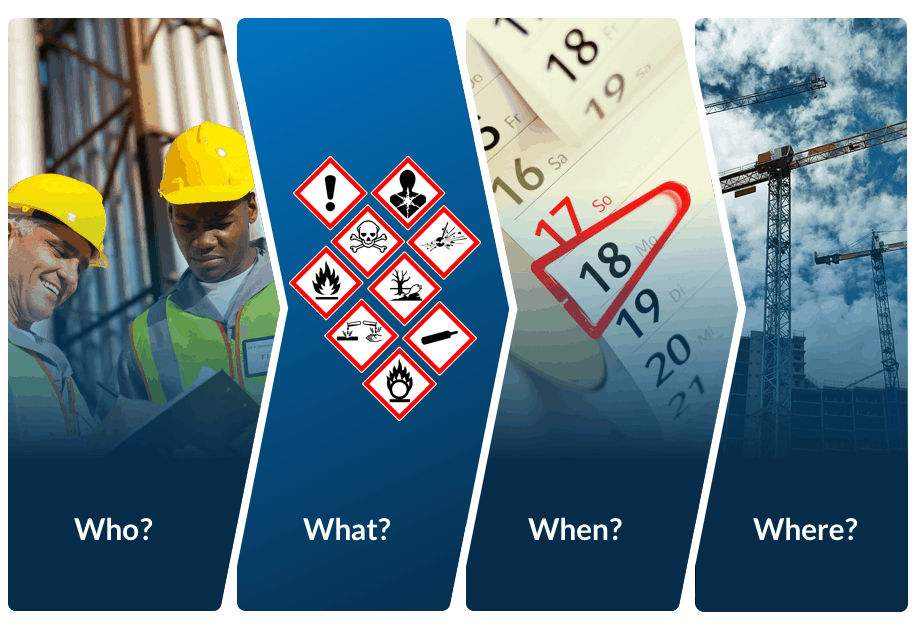In my past blog, “A Guide for Workplace Safety Inspections and Safety Observations”, I discussed the basic framework to support a comprehensive safety observation program. What I wish to explore further is the strategy of the safety observation process that determines which observations will be collected. As information is gathered, this strategy should be frequently adjusted to successfully monitor risk and controls within an organization.
Since each safety observation is a snapshot in time, it requires the right people be in the right place at the right time looking at the right things to best determine if the proper controls are in place to best manage risk in the workplace. As a result, the workplace safety observation strategy should focus on the following questions:
Who should be conducting safety observations?
The safety observation strategy should define the expectations of who should be doing safety observations. There are advantages of having many observers in the field looking at safety as well as the need to have a diverse team of observers. The safety team cannot do it alone. A team approach is needed to ensure a shared ownership of the safety process.
When should observations be conducted to improve work safety?
Once it is decided who will be doing inspections and making observations, the next step is to determine when this is done. Bear in mind that expectations on how many inspections and observations are done may vary by role. For example, your team may consist of a site safety manager, several supervisors, and a plant/project manager. We can set expectations so that the safety manager does three to five inspections a week, each supervisors des one inspection every week and the plant/project manager conducts one to two inspections a month. This is great; however, it is necessary to monitor when these activities take place to ensure excessive overlapping does not occur. The last thing you want is to have everyone decide late on Friday to go out and do inspections, leaving considerable observation gaps during the rest of the week.
Keep in mind that an inspection is a snapshot in time – plan for when observations occur so that you do not lose an opportunity to capture valuable information. Examples for timing a good, focused inspection would be a lockout/tagout event, a confined space entry, when a new contractor begins work, or during an infrequently performed task.
What should the focus be during the work safety inspection?
Observations should be commensurate with the risk. Do not focus on hard hats and safety glasses at the exclusion of higher risk activities such as fall protection. For example, if I had a contractor on site conducting work at heights, I would both plan for and expect observations in fall protection. Specific hazards to be observed should be identified through a hazard identification process and supplemented with task specific assessments from a job safety assessment, or similar pre-planning risk tool.
What is also important is what is NOT observed. Collection of safe observations will separate an average inspection process from an exceptional one by documenting work performed safely. By assigning observations to specific categories, such as housekeeping, and specifics, such as ‘walkways clear’, you should be able to track and trend what is observed the most and the least and not just the relatively few at-risk findings.
In addition to the hazard categories and questions, it is important to assign observations to the group that is observed. Observations should be linked to the department, crew/contractor, or job classification (e.g., Carpenter, Painter, etc.). This will allow you to develop trends specifically for each of these groups as well as provide meaningful feedback instead of using an overly generalized approach of making an issue isolated to one group an issue that must be addressed by all groups.
Where are observations needed in the workplace?
Most workplaces are extensive and complex. For example, a standard manufacturing facility could have an office, a docking bay where deliveries are made, a storage area or warehouse, as well as the areas for the many manufacturing activities. It is not likely or expected that each inspection that takes place will encompass the entire breadth of the entire facility. Therefore, inspections should be linked to areas within. The strategy should be to set expectations for how often each area is observed and what items and groups should be observed in each location or area. This will ensure you have transparency and visibility into all areas and activities across the organization.
Each component of the safety observation strategy is a unique piece of a puzzle. Observations that conform to the process are individual puzzle pieces that, when completed, provide a clear picture of the hazard profile and overall risk. Having this insight and visibility will allow you to pinpoint where issues are likely to occur. Taking proactive steps based on the data discovered will allow organizations to identify areas in need of attention and then addressed before unwanted issues occur.
For more details: Click here & Contact SafetyStratus Now
AUTHOR BIO

Cary comes to the SafetyStratus team as the Vice President of Operations with almost 30 years of experience in several different industries. He began his career in the United States Navy’s nuclear power program. From there he transitioned into the public sector as an Environmental, Health & Safety Manager in the utility industry. After almost thirteen years, he transitioned into the construction sector as a Safety Director at a large, international construction company. Most recently he held the position of Manager of Professional Services at a safety software company, overseeing the customer success, implementation, and process consulting aspects of the services team.
At SafetyStratus, he is focused on helping achieve the company’s vision of “Saving lives and the environment by successfully integrating knowledgeable people, sustainable processes, and unparalleled technology”.



